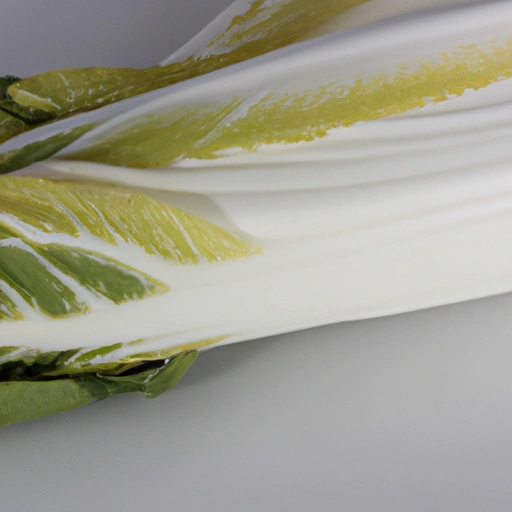Endive
Description

Endive, also known as Belgian endive or chicory, is a leafy vegetable that belongs to the daisy family. It has a crisp texture and a slightly bitter taste, which can add a unique flavor to various dishes. Endive leaves are commonly used in salads, but they can also be cooked or used as a vessel for small appetizers. This versatile ingredient is recognized for its distinctive, elongated shape, and pale, tightly packed leaves.
Common uses
Endive is often used in fresh salads, as a crunchy component in sandwiches, or as a garnish. Its leaves are perfect for holding fillings, making them ideal for appetizers and hors d'oeuvres. In addition to raw preparations, endive can be braised, grilled, or baked, which helps to mellow its inherent bitterness.
Nutritional value
Calories
Endive is low in calories, with one cup of chopped endive (approximately 50 grams or 1.76 ounces) containing about 8 calories.
Protein
This vegetable provides about 0.6 grams of protein per cup, making it a light addition to any meal.
Fat
Endive contains a minimal amount of fat, with less than 0.1 grams per serving.
Carbohydrates
Endive is low in carbohydrates, with around 1.8 grams per one cup serving.
Vitamins
It is a good source of vitamins, particularly vitamin A and K, and also contains some vitamin C and B vitamins.
Minerals
Endive offers a range of minerals such as potassium, calcium, and small amounts of iron and magnesium.
Health benefits
Endive is rich in dietary fiber, which promotes digestive health, and its vitamin K content is important for bone health. The presence of vitamin A supports good vision and immune function, while its low-calorie content makes it suitable for weight management diets.
Potential risks
While endive is generally safe to eat, individuals on blood-thinning medications should monitor their vitamin K intake, as it plays a role in blood clotting. Additionally, those with an allergy to other members of the daisy family should exercise caution.
Common recipes
Endive is featured in recipes like endive salads with blue cheese and walnuts, stuffed endive boats, and braised endive as a side dish.
Cooking methods
It can be served raw, grilled, sautéed, braised, or baked, offering a variety of textures from crisp to tender.
Pairing with other ingredients
Endive pairs well with ingredients such as apples, pears, nuts, blue cheese, vinaigrettes, and citrus fruits, complementing its bitter notes with sweet, tangy, or creamy flavors.
Summary
Endive is a unique and nutritious leafy vegetable with a variety of culinary applications. From its historical roots in Europe to its contemporary use in kitchens around the world, endive offers a special blend of flavors and nutrients that can enhance a wide range of dishes.